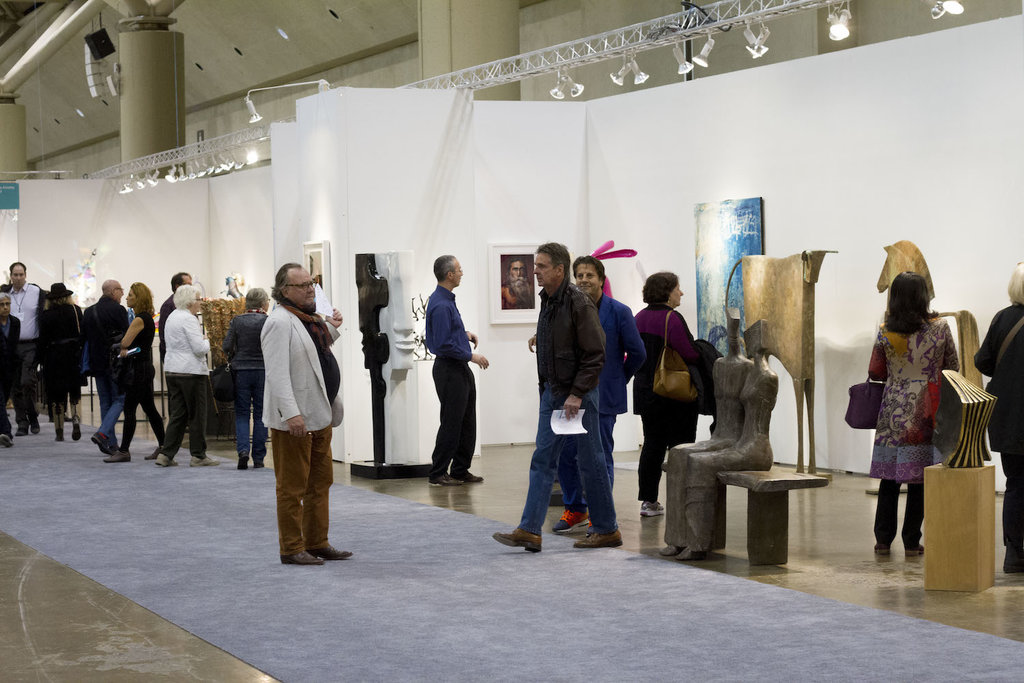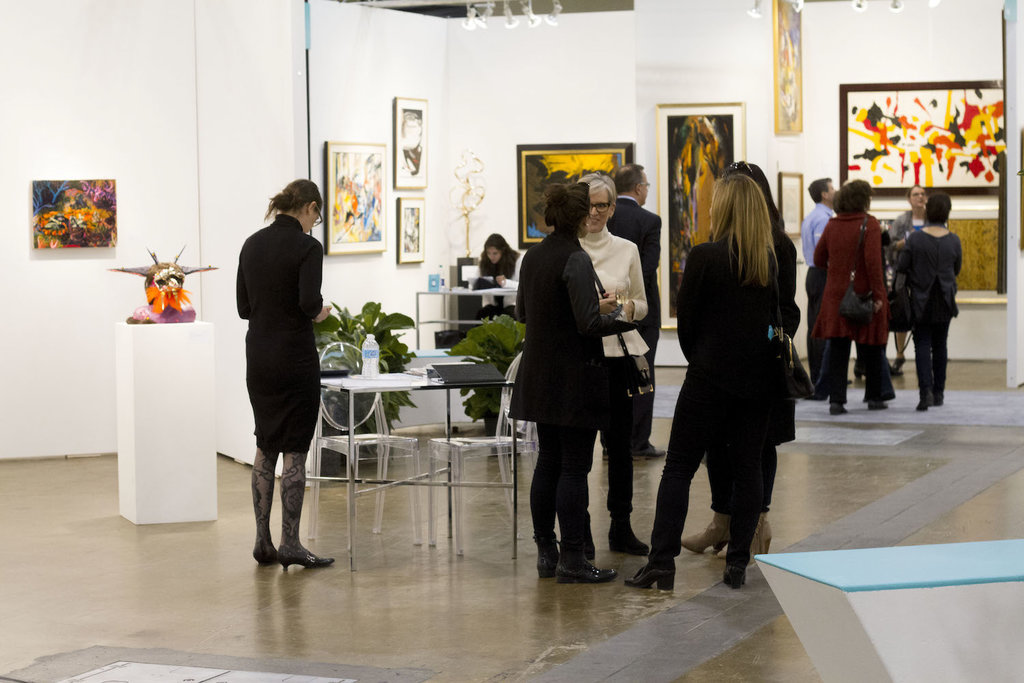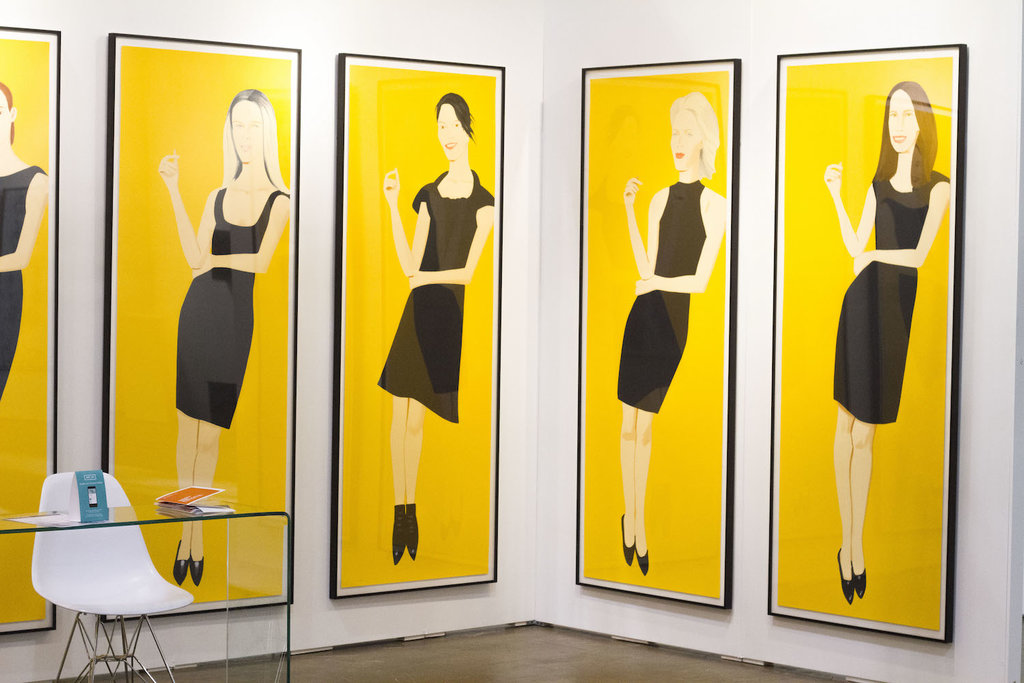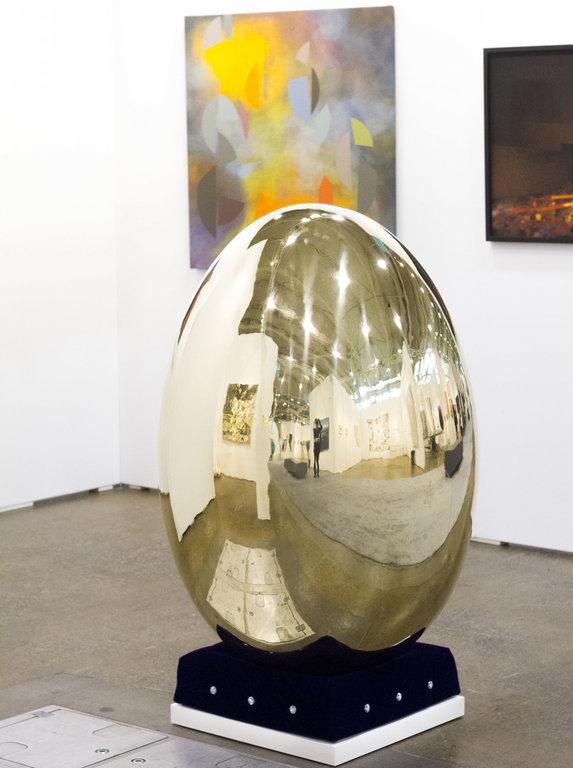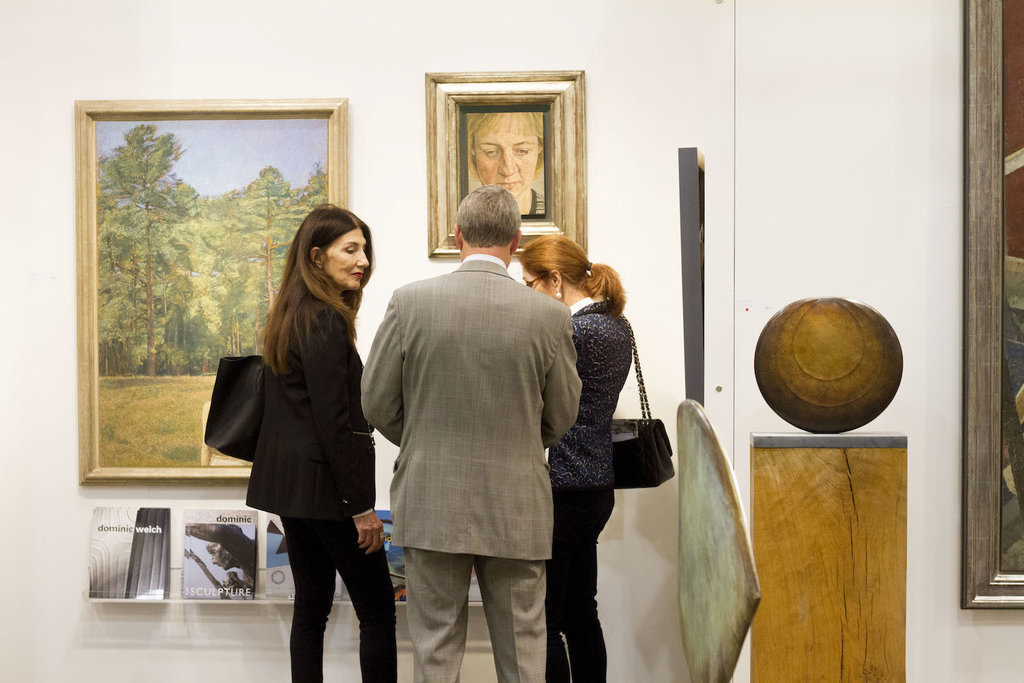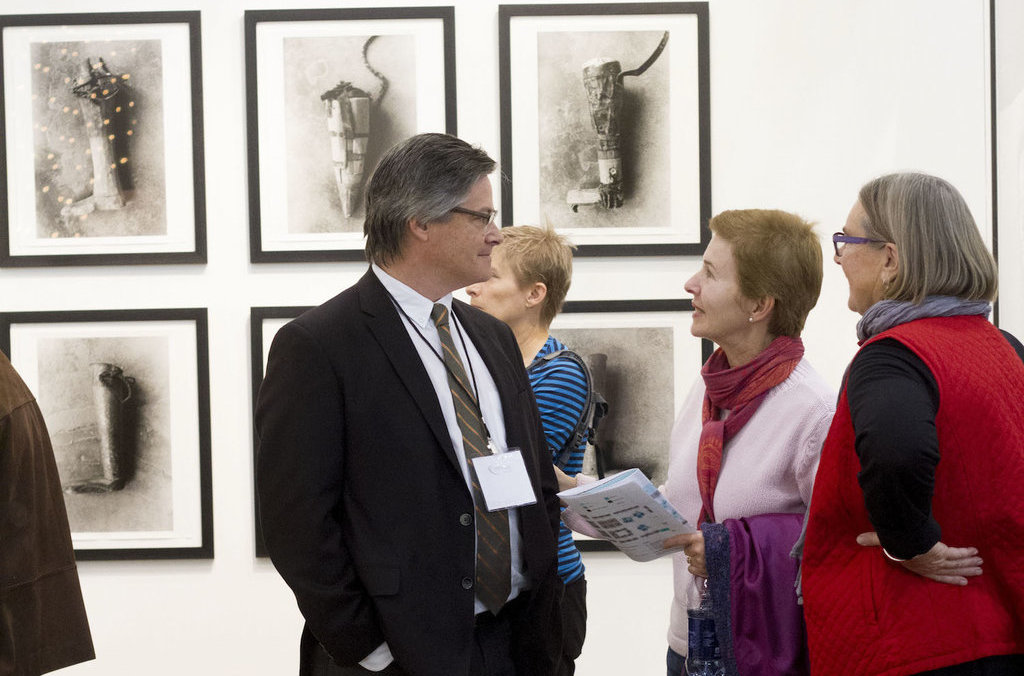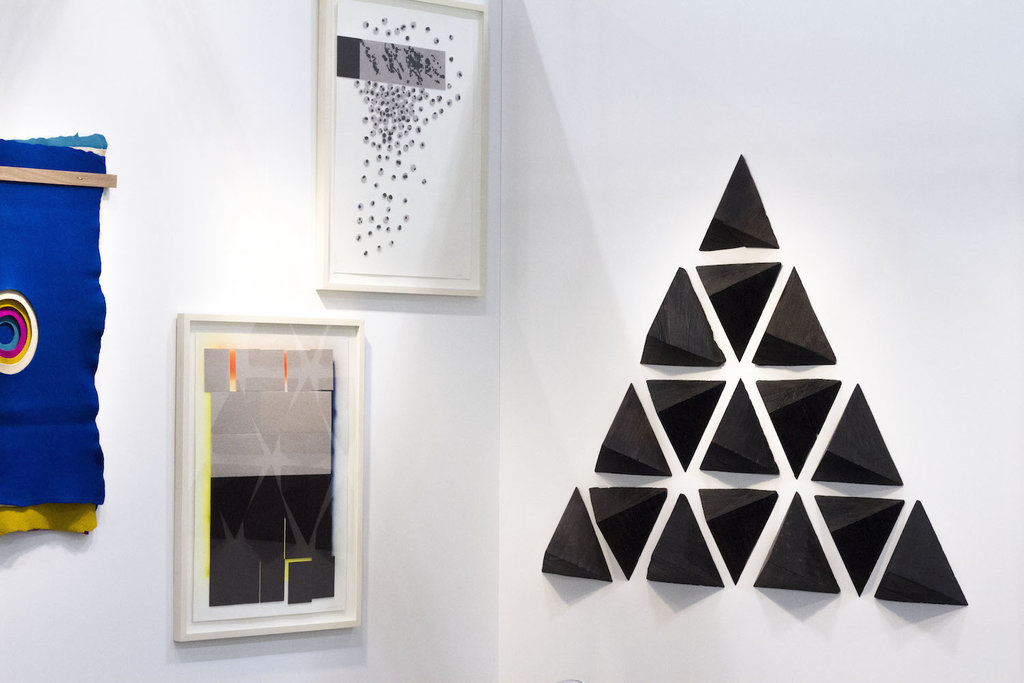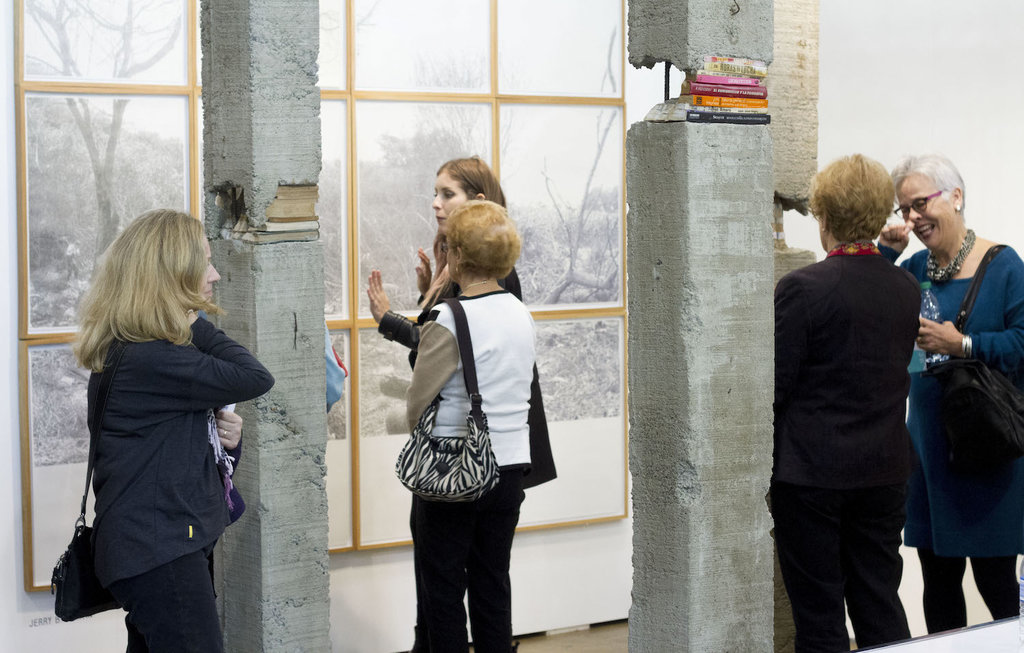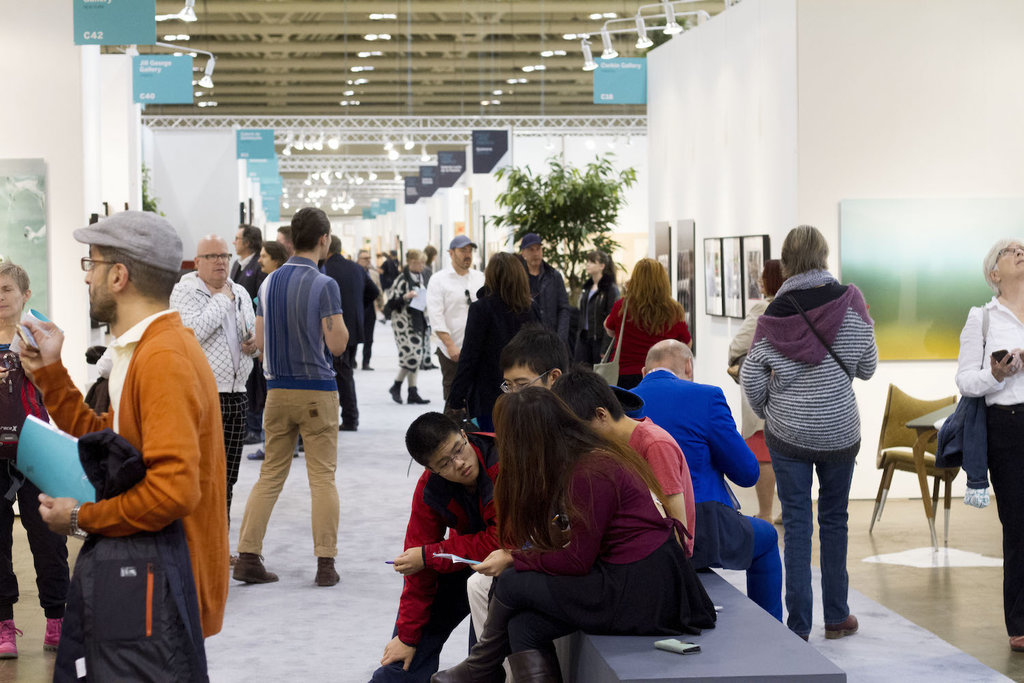October 23 – 26, 2015
METRO TORONTO CONVENTION CENTRE
North Building, Exhibit Hall A & B
255 Front Street West
Hours: Fri & Sat, 12 – 8 p.m., Sun & Mon, 12 – 6 p.m.
Now in its 16th year, Art Toronto presents important artwork from leading Canadian and international galleries. The fair this year is slightly smaller than in its previous years featuring less than 100 galleries. Since this is Canada’s only international fair, there are 30 galleries from all over the world.
Near to the entrance there is the winners’ show of RBC Painting Competition.
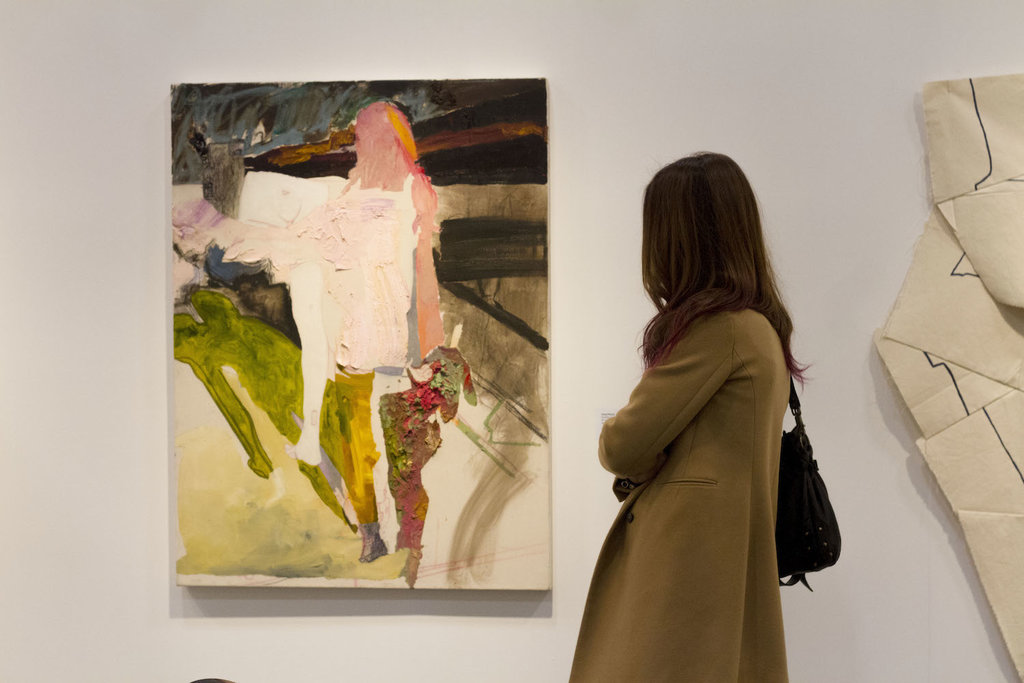 RBC Painting Competition with Cindy Phenix, Montreal, QC, Hostility under a bridge, 2015
RBC Painting Competition with Cindy Phenix, Montreal, QC, Hostility under a bridge, 2015
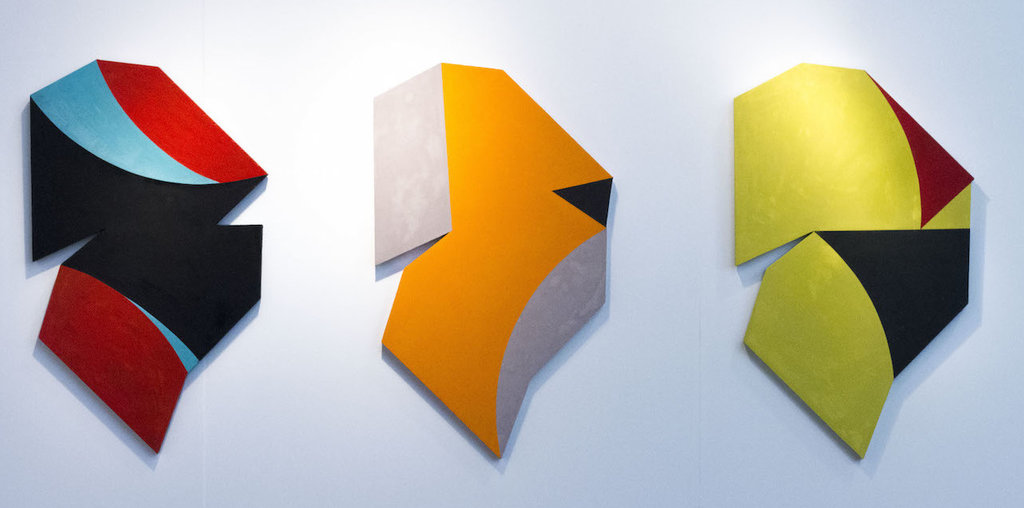 Nicholas Metivier Gallery, Toronto
Nicholas Metivier Gallery, Toronto
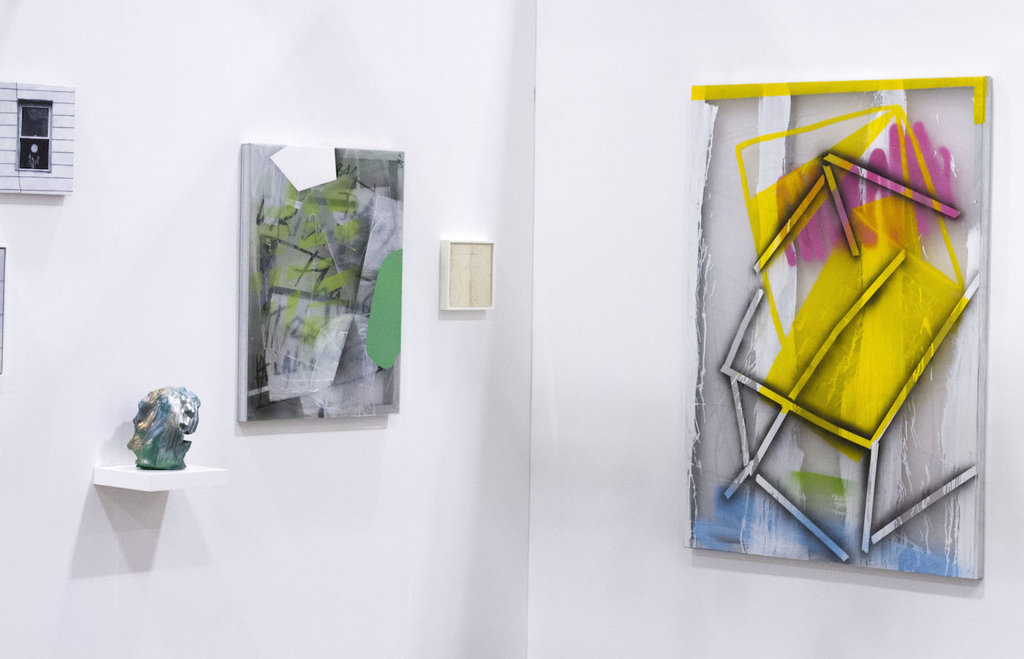 General Hardware Contemporary, Toronto
General Hardware Contemporary, Toronto
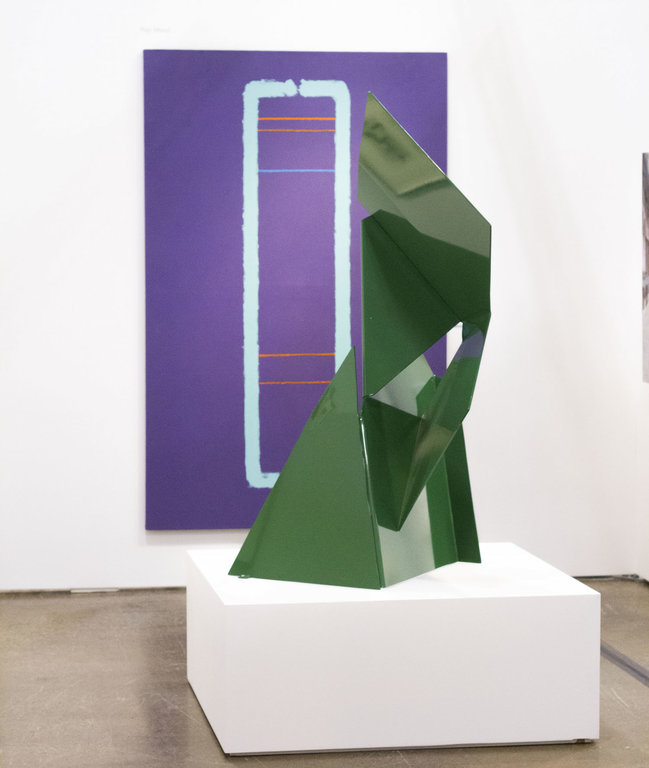 Barbara Edwards Gallery, Toronto
Barbara Edwards Gallery, Toronto
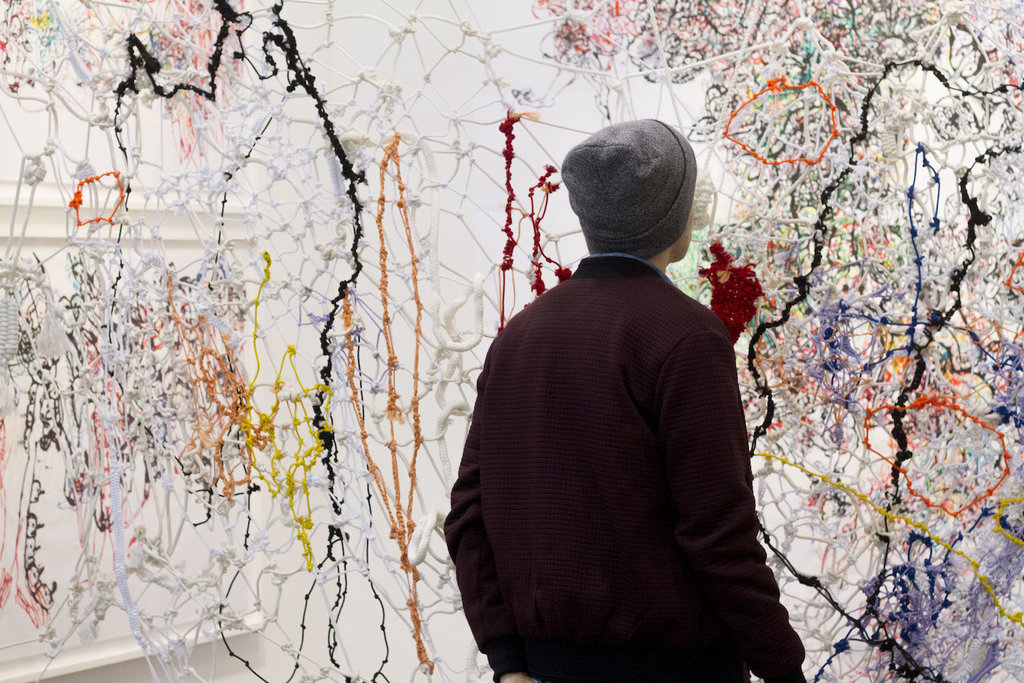 Pierre-Francois Ouellette art contemporain, Montreal
Pierre-Francois Ouellette art contemporain, Montreal
It the past it was Stephen Bulger only who had a solo show for one artist. This year more galleries chose to introduce only one of their artists in their booth. Angell Gallery dedicated its booth to Gavin Lynch latest work, The Pass (2015-2016). Lynch seems to move away from his previous stylized abstract landscapes involving more figures in his compositions.
 Gavin Lynch, Tete Jaune with HBC Blanket, 2015, from Angell Gallery
Gavin Lynch, Tete Jaune with HBC Blanket, 2015, from Angell Gallery
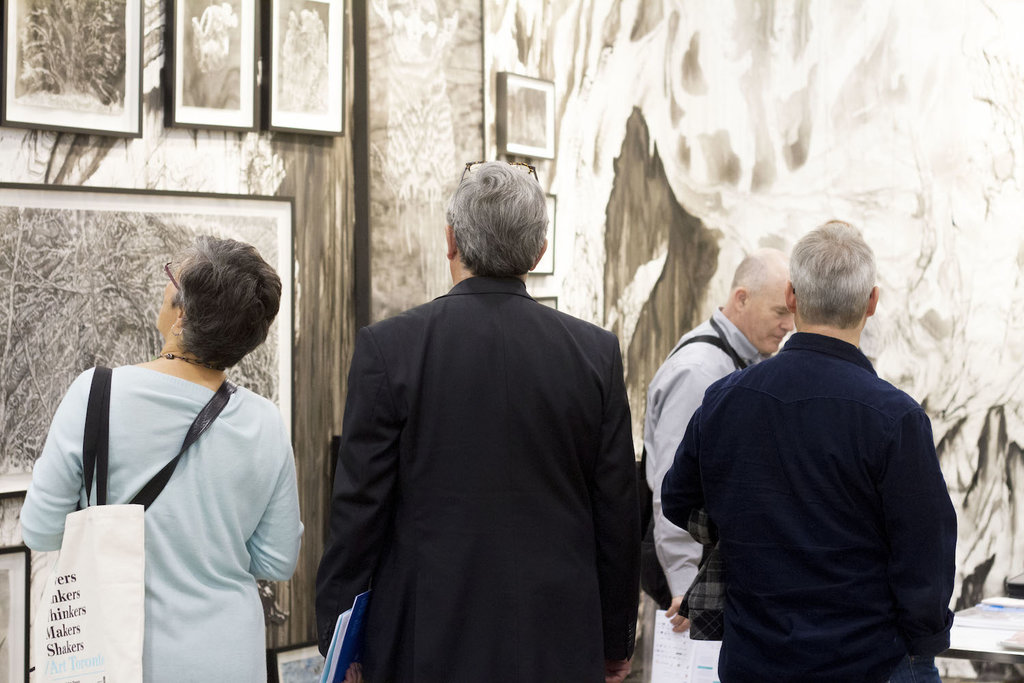 Galerie Donald Browne, Montreal
Galerie Donald Browne, Montreal
There is also Focus on Latin America. The project curator Abaseh Mirvali writes: “The curatorial concept envisioned is inspired by artists whose language presents a dialogue between art and architecture, a questioning of reality, expansion of the traditional languages and a demand that the viewer engage more closely with the works. The presentation is more a display of six solo artist presentations that share concerns about the artistic process and the need to go beyond the traditional artistic techniques. These artists leave behind the folklore, going beyond the stereotypes that sometimes is associated with the work by artists from Latin American and simply focus on their practice.”
Mauricio Contreras-Paredes
Latitude West: Latin American Art After the Canon / Platform Speaker Series
Saturday, October 24, 2015 / 1 p.m.
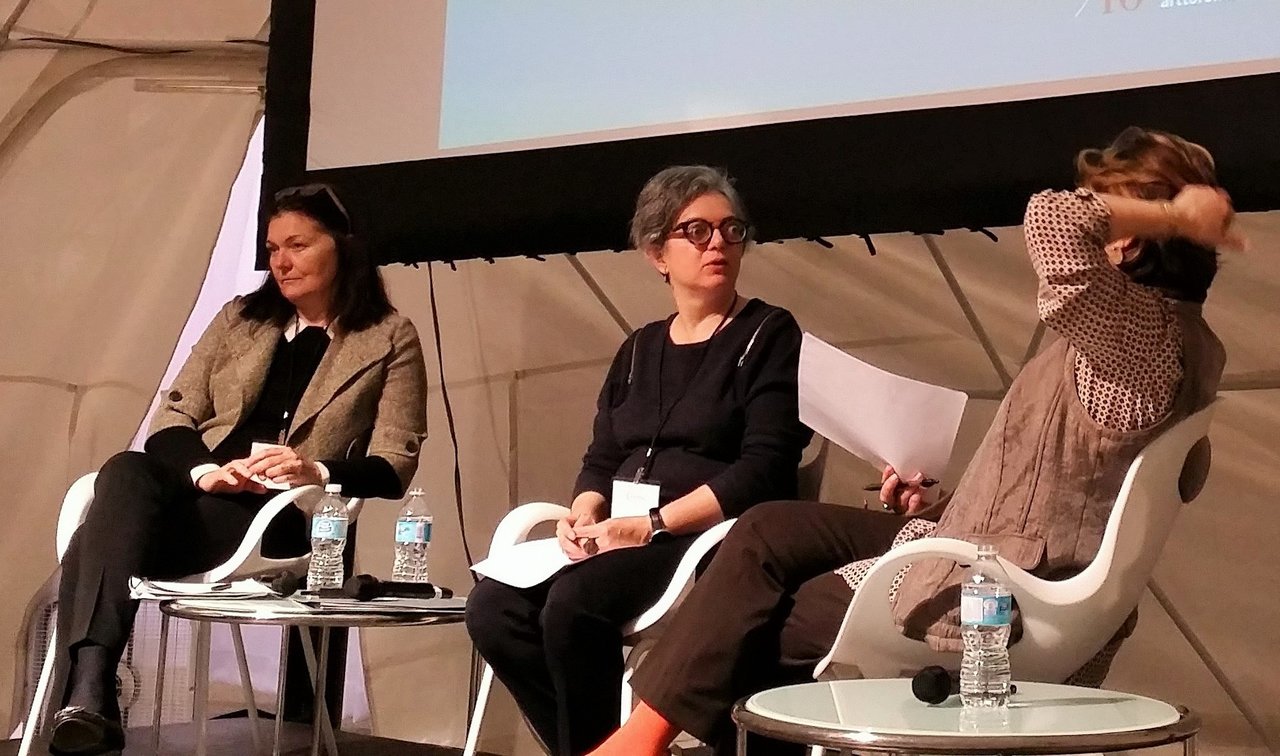 From left to right: Beverly Adams, Gabriela Rangel and Tahia Rivero
From left to right: Beverly Adams, Gabriela Rangel and Tahia Rivero
Presented by Americas Society and help at Art Toronto 2015, this panel discussion included curators Beverly Adams and Tahia Rivero, curator of Latin American Art at Blanton Museum of Art and curator of the Colección Mercantil de Caracas, respectively. Moderated by Gabriela Rangel (director of Visual Arts and curator at the Americas Society), the panel explores Latin American art and its complex ties to its geography, and the consequences of geopolitics between the U.S and Latin America.
The term ‘Latin American Art’ was a foreign one in the 19060’s, a time when only a select few schools even taught art history as a program. The focus on Latin American art was heavily due to private collectors like Barbara Duncan. National Museums in countries such as Venezuela could not match the expansive and dedicated collection of private collectors, thus depending on donations from said collectors to continue the museums. Real American interest in Latin American art began, according to Adams, under the pressure of the post-war political conditions – as political necessity. This combined with Duncan’s generous donation of her collection to the Blanton Museum of Art, the term ‘Latin American Art’ began to formulate in both national and international minds.
The panel also discusses the term itself, and whether art can be tied together by geography. For the artists that dismantle geography, they should not be defined by location. Especially considering that approximately 1.5 million Venezuelans do not live in their own country (having fled the country since the 1990s), Venezuela-born but living abroad artists do not look at their own art as ‘heritage’. Furthermore, while pre-Chavez Venezuela creatively flourished with one of the best art industry, that unfortunately ended with Chavez. Unlike Cuba’s revolution, Venezuelan revolution never included intellectuals and artists, having mainly led by the militia. Venezuelan art industry has suffered greatly from current economic conditions, causing artists to achieve recognition internationally. This also meant that like in the 1960s, Venezuelan public stopped collecting art, transferring that responsibility onto private collection firm like Colección Mercantil de Caracas. Rivero recognizes the binarism of the nation’s artists, separated by local and abroad, and through Colección Mercantil, Rivero organizes exhibitions to show Venezuelan art both locally and globally.
This talk is quite an influence in terms of looking at the FOCUS: LATIN AMERICA at Art Toronto, a curation of projects from Latin America. Artists featured in this section attempts to abandon the artistic stereotypes that are tied to Latin America, by geography or otherwise.
Text and photo: Sunny Kim

